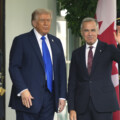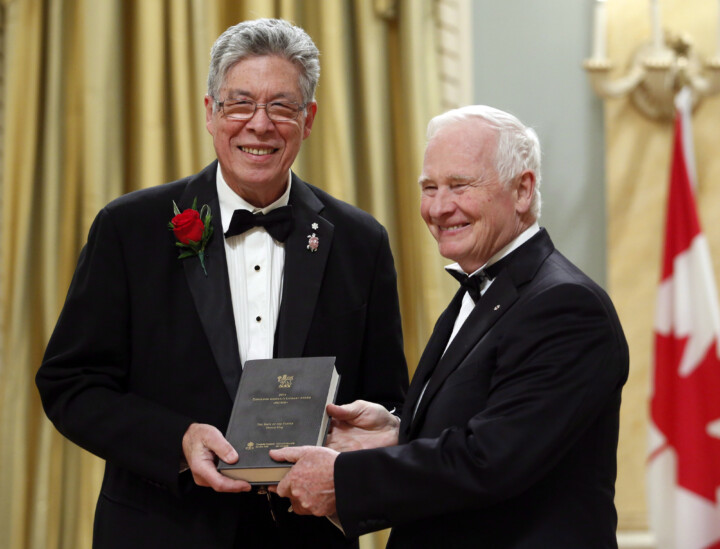
Canada has a major economic opportunity in the global low-carbon economy, if it gets its climate and energy policies right. Those policies should be informed by principles like leveraging the ingenuity of markets and free enterprise, limited government, and respect for provincial jurisdiction. The following article is the latest installment of The Hub’s series sponsored by Clean Prosperity exploring the why, what, and how of conservative climate policy.
1. Canadian conservatives are uniquely suited to lead on climate
Conservatives and conservatism can make an important contribution to climate action in Canada. This contribution is needed now more than ever.
A conservative approach to climate puts human ingenuity and innovation at the centre of the agenda. For conservatives, climate action should be about reimagining the industrial economy. As The Hub’s editor-at-large Sean Speer argued, this project needs to be audacious and exciting.
“Reconciling economic progress and environmental stewardship will be what the 21st-century is fundamentally about,” Speer wrote. “This is the story that future historians will teach about our era…It’s an abundance agenda.”
Conservatives can offer an alternative to the notion of a zero-sum relationship between humans and nature.
Conservatives have also shown they can deliver environmental policy that works for Canadians. They should take pride in their achievements and figure out how to take them to the next level.
2. Conservative policy can grow the economy and reduce emissions
Canada is struggling with crises of affordability and productivity. Low-carbon economic growth can boost Canadians’ standard of living.
Conservatives can take a diversified approach that sees Canada continue to supply the oil and gas that the world needs while we work to become a leader in the low-carbon energy of the future. We can do this by leveraging market dynamism instead of through top-down regulation.
“What the government needs to do is define the parameters of the playing field and the rules of the game,” said David Redfern, president and CEO of Lafarge Canada (East) and head of Aggregates and Construction Materials Holcim (U.S.). “And if they do that, they free the market to come and find the answer.”
A conservative climate plan for Canada will be made in Canada, not at international meetings, argued Clean Prosperity’s Benjamin Dachis and Adam Sweet. It needs to be drafted in consultation with the private sector, not imposed on them. It also needs to be clear and straightforward.
Above all, a conservative approach to climate “needs to leave behind the false binary that says Canadians have to choose between climate action or economic growth,” they wrote.
3. Alberta offers an example of how conservatives can lead on climate policy
Alberta’s TIER system for industry is a successful market-based mechanism that rewards companies for cutting their emissions. It’s helping to drive investment in new technology, like direct air capture.
Alberta pioneered industrial carbon pricing and it invests the proceeds into research and development to reduce emissions. “It’s through technology, not taxes, that we’re going to solve this,” argued former Alberta Premier Jason Kenney.
Investments in technology have helped Alberta reduce emissions, even as oil and gas production has increased.
“In terms of the so-called energy transition, I think Alberta can be a sort of Silicon Valley North. A real hub of innovation,” Kenney added.
4. Conservative climate policy should be rooted in affordability
“[A] wise climate policy will reject that which seems only to cater to appearances,” Ginny Roth, former director of Pierre Poilievre’s Conservative leadership campaign, argued. That means not shying away from technologies like nuclear power “just because it’s not trendy.” It means recognizing that Canadian households still need affordable ways to heat their homes in our cold country.
“A conservative vision for low-carbon growth can and should make people’s lives better—not cost them money,” Dachis and Sweet wrote.
An all-or-nothing rush for heating and vehicle electrification ends up making perfect the enemy of good. Instead, conservatives should emphasize middle-ground technologies that save Canadians money even as they reduce our emissions. That includes hybrid electric vehicles and hybrid heating systems.
5. Conservative climate policy starts with respect for provincial jurisdiction
Canada isn’t on track to achieve its climate targets. The federal and provincial governments are locked in a battle over ever-proliferating laws and regulations. To resolve the impasse, wrote Dachis, “the feds need to stay in their lane.”
Instead of letting carbon pricing be the policy cornerstone it was intended to be, the federal government has piled on a tangle of other policies which have just created more complexity and uncertainty. Ottawa is increasingly intruding on provincial jurisdiction.
But it doesn’t have to be this way. The federal government should withdraw its intrusive policies like the oil and gas emissions cap and let provinces chart their own courses. Provinces are best positioned to figure out how to achieve low-carbon growth and reduce emissions. The federal government’s role should be to hold them to account.










